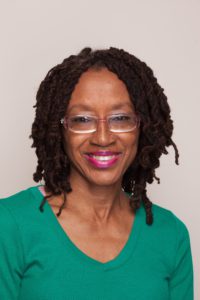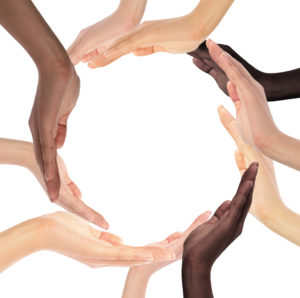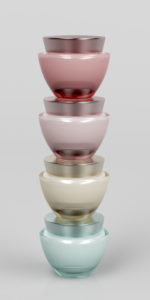
Simply business for cosmetic companies, or beauty need for multiethnic consumers on the rise who don’t meet satisfying products, Multicultural beauty is increasingly gaining momentum and is set to became the new culture of beauty.
When you go to the States you can’t really define «one look» because of the so many different origins. USA is in-facts the land of “Millennial Generation” those born between 1980 and 2005, whose most widely observed attribute is the ethnic and cultural heterogeneity. In the USA, they are the largest generation, representing one third of the total USA population in 2013. Many Millennials are immigrants or children of immigrants. The number of people of Hispanic ancestry is on the rise, followed by African-Americans, Asians and other people with colored skin, while the number of people of Caucasian ancestry is on a market decline. The so called «minorities» will soon became the majority in the States and, according to growth forecast, it is likely their children will mix even more, challenging cosmetic manufacturers to create new products categories. For example, the person might have African curls but sun sensitive, freckled skin and Asian eyes. They would need specific beauty products to address their special beautiful traits.
Cosmetics companies discover multiethnic consumers
This new multicultural landscape, as a consequence means that a growing number of consumers from multiple ethnic backgrounds, has lots of difficult to find brands that speak to them. Women with colored skin, for example, spend more time to find the right foundation and generally to research and understand a product, in comparison to Caucasian counterparts. Multiethnic consumers, shifting towards the majority, represent a new R&D area and a source of future growth for beauty industry and Multicultural Beauty is the name of this new branch of beauty market. According to market intelligence consultancy Kline, in 2014 the multicultural beauty products market grew 3.7 percent in the US, outpacing the growth of the overall market for cosmetics and toiletries [1]. Ethnic products require more complex formulation than regular ones, necessitating greater investment in R&D. Foundation for white skin requires a maximum of three different shades, whereas ethnic skin requires a greater number of shades. In addition, texture needs to be carefully engineered as products can be chalkier on ethnic skin. The issue of ethnicity is made more complex by the fact that there is a wide variety of skin tones and hair types among ethnic consumers. For example, a Cosmetic Industry Giant launched a foundation after nine years of research into over 7,000 global skin tones to create the perfect 22 shades to reflect the full range of skin tones from around the world [2].
Mainstream and niche companies: different view of multicultural beauty
To better understand this new market, complex as identifies and develops the right solutions for miscellaneous needs, we interviewed Gerrie Summers, the Multicultural Beauty Expert for About.com, one of the most popular Website in the States, considered the largest source of expert content on Internet. Gerrie, who lives in New York, is also a writer, specializing in beauty, health and lifestyle, and was beauty editor of Today’s Black Woman for 15 years. From her point of view, in terms of her site, multicultural beauty can be defined as beauty geared towards women of color, African, Asian, Latina, and women of mixed heritage, who have skin that is what she call, “melanin-rich”. From the industry point of view, it is a marketing term to easily address that fast-growing market. The phenomenon is gaining ground now, particularly given that grooming is universal and solutions have been made available to all in various forms, but Gerrie underlines that even if grooming is universal, not all products are (or can be) «multicultural consumers aren’t looking for cookie-cutter solutions. They are looking for products that are truly made with them in mind and in some cases, speak to their culture, for example through specific, traditional ingredients».
The new market is considered the most promising vectors of growth by companies, but they intend it in two completely different way, as Gerrie explains «there are mainstream companies that may create great products, but still do not have enough foundation shades for darker skin tones, or if they do have a significant amount of shades, there might be ingredients that are not safe for certain skin types. Other individuals might want to support smaller, niche companies because they better understand their special needs than major companies. Those niche companies might be more likely to use a wider range of models, so that consumers can see how certain makeup with appear on darker skin tones. Other products, such as hair care products are still not always properly addressed by certain mainstream companies. More women are interested in natural products. In the US more major companies are creating multicultural beauty divisions to address the needs of this market, or acquiring multicultural companies. For example, in 2014 L’Oreal acquired Carol’s Daughter. Unfortunately one problem for small, niche businesses – is that they often can’t compete with the larger companies. While you’ll see more major brands trying to reach the multicultural market, multicultural companies will work to reach a more general market in order to survive».

What is new and the benefits for consumers of the expanding market
One of the feature of the Multicultural Beauty it’s the natural trend, naturally positioned products tend to be more popular among ethnic consumers compared to general cosmetics. «In the African American community -our expert asserts- the movement towards more natural hair and less chemicals in products is still growing». The second brand new is the DIY«there’s also a lot of interest in do-it-yourself beauty products. Companies might address this with their own form of DIY products, for example, instead of a coffee scrub made with preservatives, there will be a packet containing a scrub that can be mixed with purified water. I think more companies will also have to move away from the one size fits all marketing of products, utilizing more personalized skin care, or perhaps using more technology to help consumers match products to their special needs». Catering to non-Caucasian customers means developing products for a much broader range of hair and skin types, with different characteristics, from pore size and pigmentation, to different kind of hair, in order to give a real benefit to the consumers, but according to Gerrie, the physiological one, is not the only benefit «I think one benefit of multicultural beauty is that multicultural companies are more apt to also meet cultural needs of the market they are attempting to attract. For example, a company like Miss Jessie’s boosts confidence, acceptance and the beauty of natural, curly and kinky hair types. The founders of SheaMoisture use preparations inspired by their grandmother who was from a village in Sierra Leone – so there is an ancestral and cultural aspect to the company that I find attractive. Some companies give back to the community they are reaching, so it’s more than just a way to make money. Many of these companies also focus on safer and more natural ingredients, since many multicultural consumers are interested in organics».
The new culture of beauty
Fast growing ethnic population, new products with multifunctional benefits, naturally positioned products, higher women’s education increasing the consumption, and furthermore, the growth of interracial couples creating new dynamics in terms of skin color and behaviour, are the most important key factors which are driving Multicultural Beauty to became the first culture of beauty. In 2050, forecasts say that Hispanics will be 28% of all the United States population, African-Americans 17% and Asians 8%. «For years -the New York writer says- there have been predictions that minority birth rates will surpass those of whites and that whites will no longer be the majority in the US by 2043. In addition, this segment is already outpacing the general beauty market in growth». And if we ask if Multicultural Beauty it’s the new culture of the cosmetic world, she says yes, and that in the future, with such a mixed population, (she has heard the term polyethnic being used) companies will need to focus more on specialized, personalized options, instead of focusing on one group.
HALAL COSMETIC: A SHAPE OF MULTICULTURAL BEAUTY?
Since many years Halal Beauty is another important branch of the cosmetic world, renowned to consumers for it’s pure and natural reassurance. All the formulations Halal certified, don’t contain alcohol, animal ingredients and harsh chemicals and are not tested on animals. Even if non-Muslims consumers searching for vegan, cruelty free and devoid of harsh chemicals products, response positively to this market, the mainly Halal consumers are Muslims, this is why we asked Gerrie Summers, the Multicultural Beauty Expert for About.com, if Halal could be considered a shape of Multicultural Beauty «halal has an additional element -she says-in that it is faith-based and therefore if certified, undergoes stricter regulations. As far as I know, there is only one company that is certified halal in the United States, Amara Halal Cosmetics. Finding alternatives to alcohol and animal-derived ingredients in cosmetics, which would be forbidden in halal products, will drive the cost up. Companies that are already certified gluten-free, organic, fair trade, eco-friendly and cruelty-free will have an advantage. The problem is a product that is truly halal would also have to adhere to certain rules in terms of the manufacturing process, safety and treatment of employees, and maybe even distribution methods».
BEAUTY TRENDS OF EMERGING AND DEVELOPED ECONOMIES
Multicultural Beauty it’s typical of Emerging economies which are now characterized by Western beauty ideals, even if they are starting to embrace local beauty ideals and traditions. In the future, emerging local pride will lead consumers to embrace their physical and cultural differences and set trends, creating locally adapted product lines incorporating local trends based on cultural traditions and pop colture, Instead, the Developed economies are characterized by the need for individual differentiation and personalization, as a consequence of increasing globalization and ethnical mixing. In the future technology and science (Big Data and DNA testing) will increase the level of service and true customization. The future aim of Developed Economies is to offer customizable product line adapted to individuals rather then marketing groups. All in one evolves towards « All for you». So, if the Emerging Economies are going towards Multicultural Beauty, the Developed one, seems to go to the opposite, but probably, demographic development will influence developed economies very soon.
References
[1] http://www.in-cosmetics.com/RXUK/RXUK_InCosmetics/2015-Website/Documents/in-cos15,%20D1,%20Two-faced%20-%20The%20multicultural%20beauty%20products%20market%20in%20the%20United%20States,%20Vera%20Sandarova.pdf?v=635651378185283092
[2 ] http://blog.euromonitor.com/2013/10/brands-find-eethnic-beauty-space-worth-development.html
by D.Barillaro


